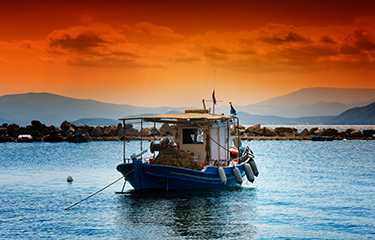Protecting 30 percent of the Mediterranean Sea in specific areas will reverse the declining fish stock trend seen in the region and support the recovery of the wider ecosystem, according to new analysis compiled by WWF scientists.
While the E.U. last year pledged to protect 30 percent of land and sea areas by 2030, currently only 9.68 percent of the Mediterranean Sea has been designated for protection, with only 1.27 percent deemed as effectively protected. In its “30 by 30: Scenarios to recover biodiversity and rebuild fish stocks in the Mediterranean” report, WWF maintains that fish stocks will continue to decline if unsustainable fishing and other industrial activities continue.
The analysis highlights that with 30 percent protection in the western Mediterranean, for example, the biomass of predator species like sharks could increase by up to 45 percent, while commercial species like groupers could rise by 50 percent, and European hake could double.
The biomass of bluefin tuna could potentially increase by up to 140 percent, the report stated.
“By protecting key areas of our seas and coasts, we can trigger a domino effect of positive results. Rolling out this protection across the E.U. is vital to realising the objectives of not only the European Green Deal, but of the Biodiversity and Farm-To-Fork Strategies. The recovery and protection of the biodiversity that hundreds of millions of Europeans depend on cannot be delayed,” WWF European Policy Officer Odran Corcoran said.
WWF’s study was conducted in collaboration with scientists from the French CNRS-CRIOBE, Ecopath International Initiative, and the Spanish ICM–CSIC. It identifies that the Mediterranean is one of the most economically important seas in the world, generating an estimated annual economic value of USD 450 billion (EUR 368.2 billion) from ocean-related activities – but that the economy depends on healthy marine ecosystems and biodiversity, especially in the fishing and tourism sectors.
Some 505,000 people are directly or indirectly employed by the region’s fishing sector, with small-scale fishers accounting for 55 percent, the report said.
Photo courtesy of blotches of color/Shutterstock







